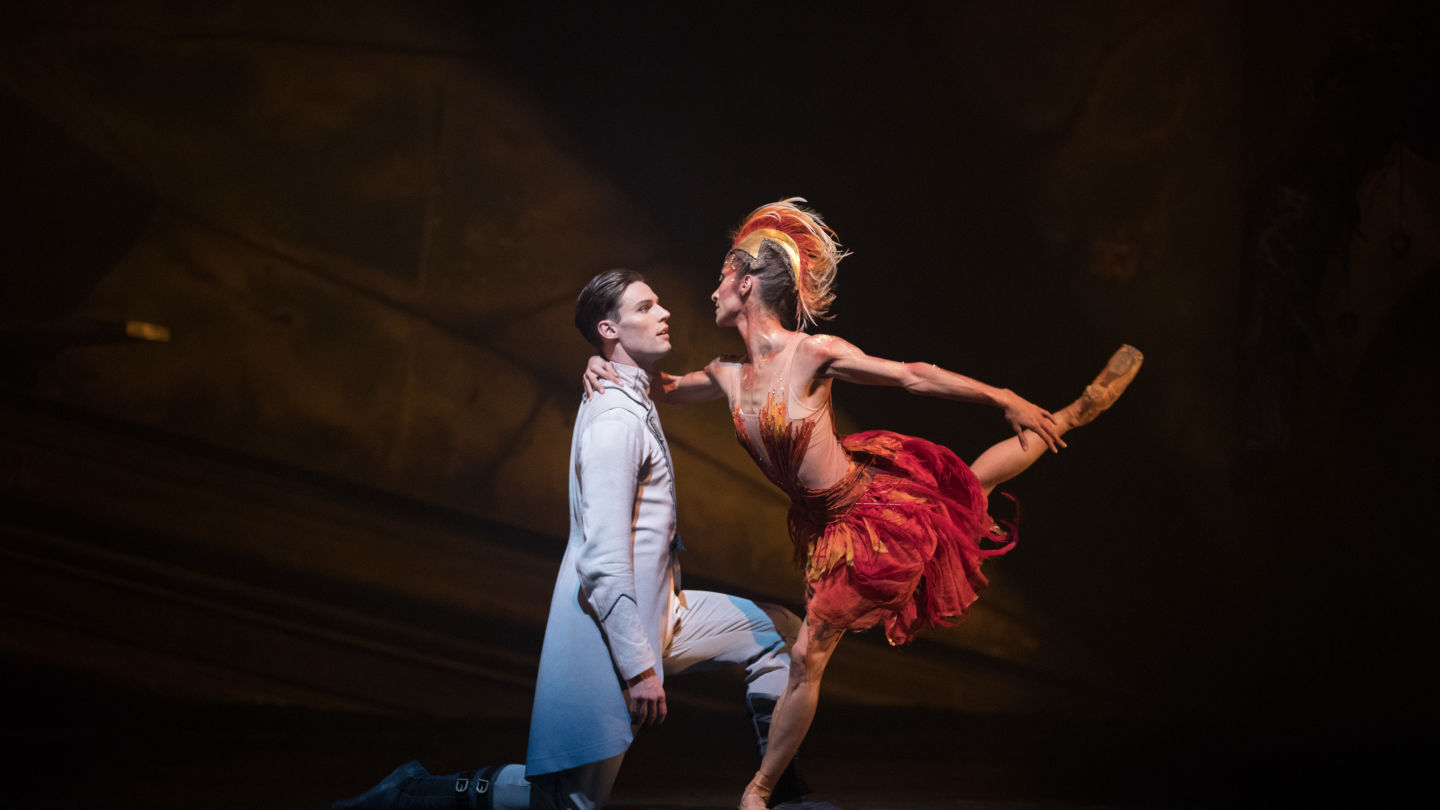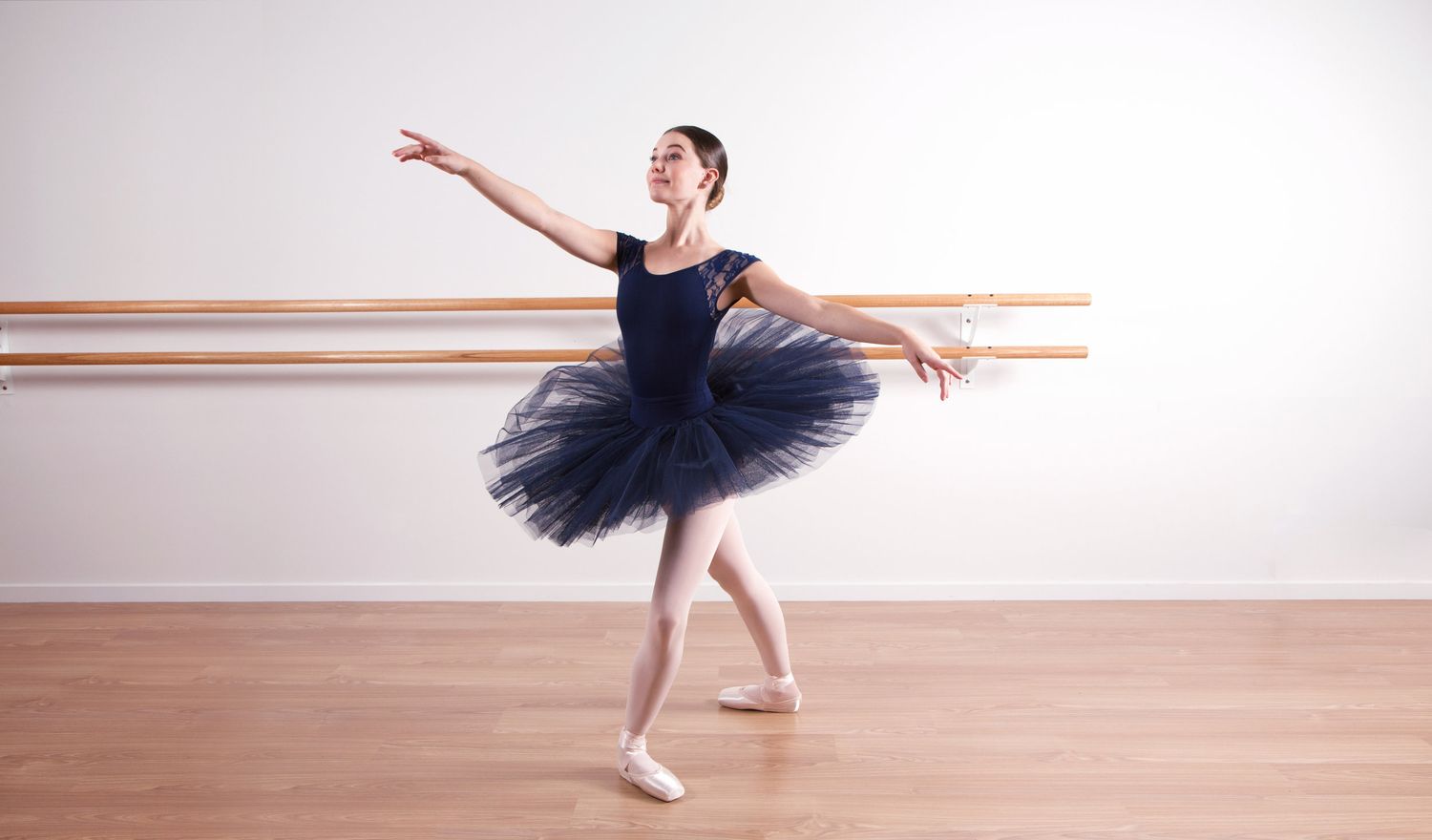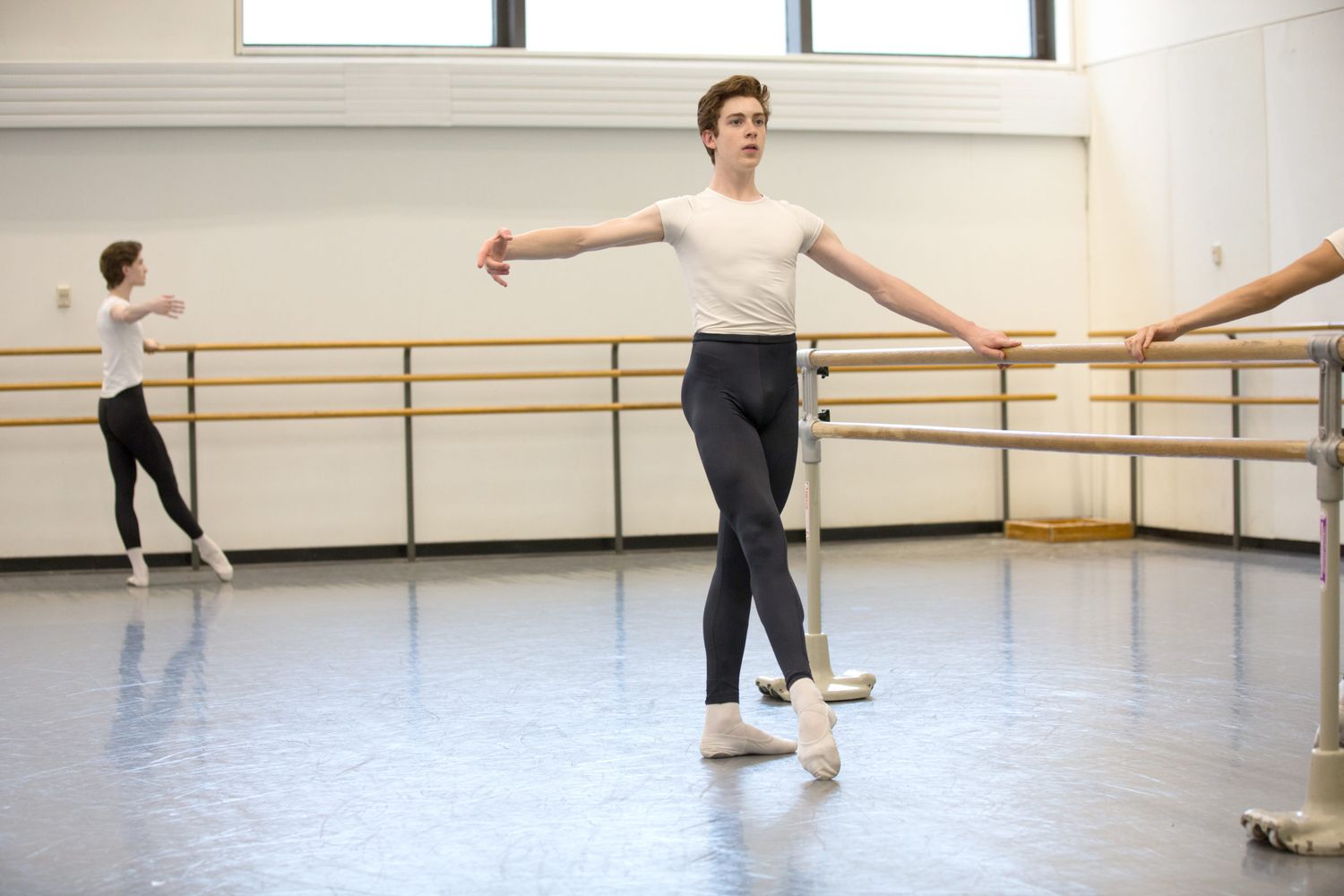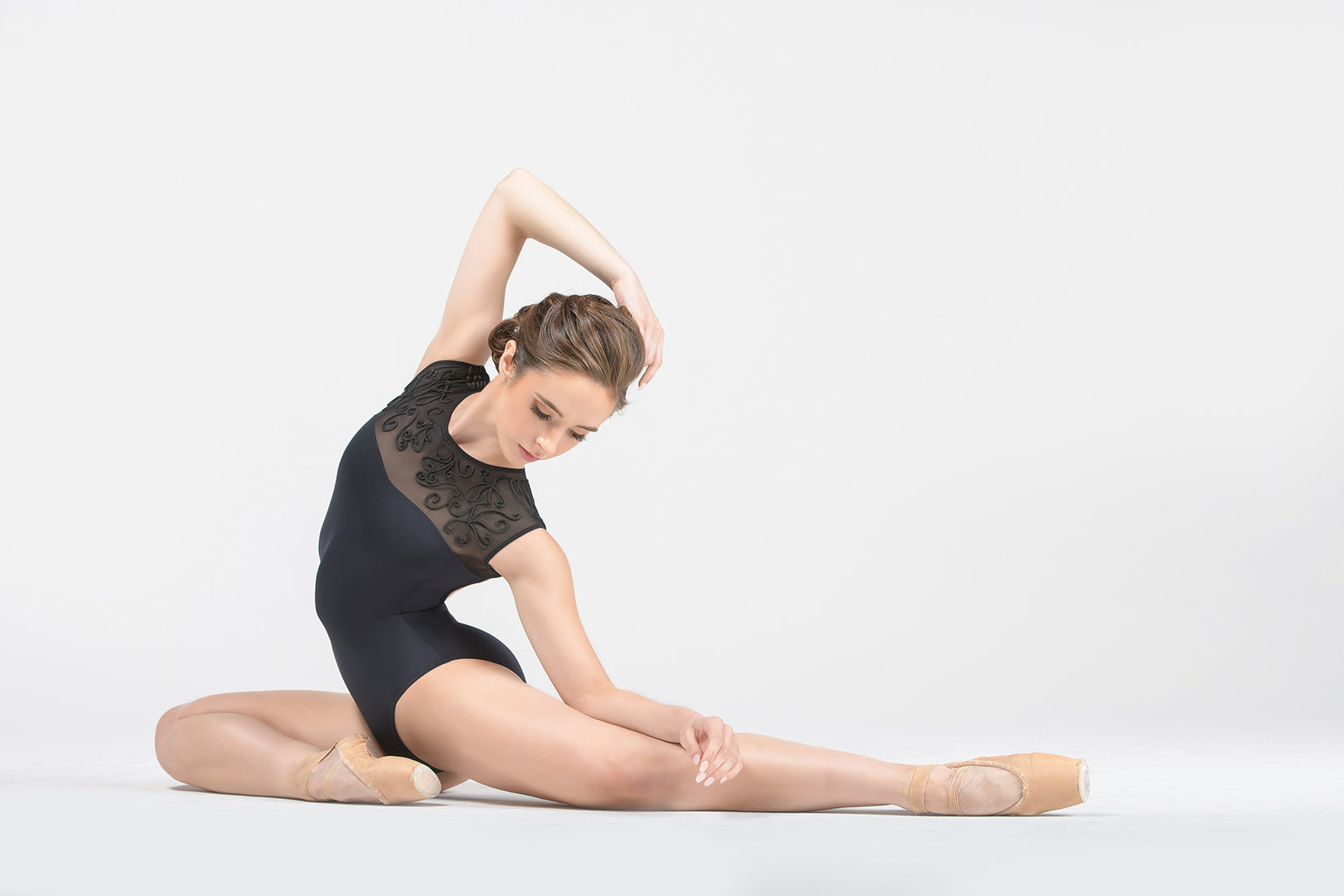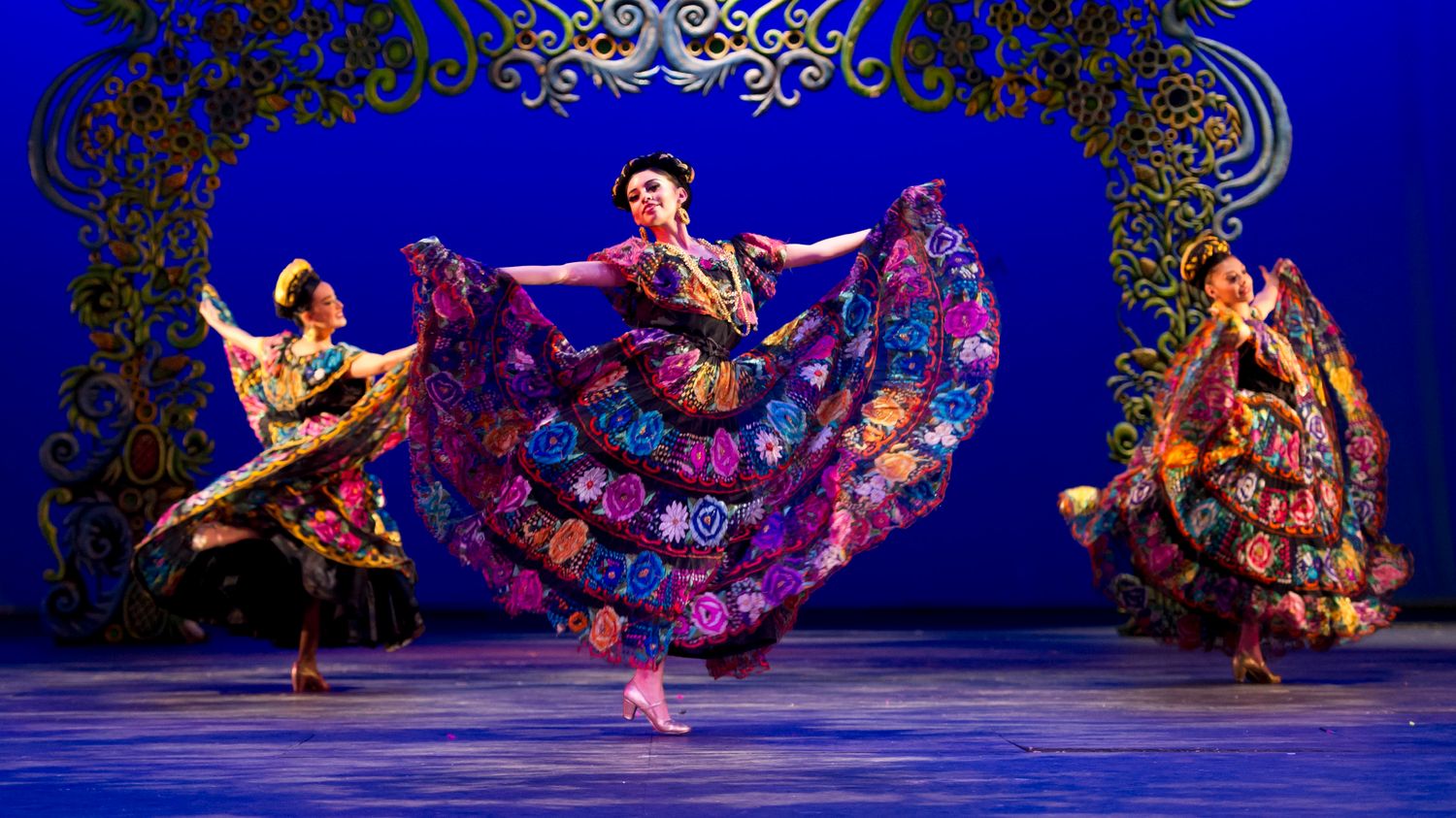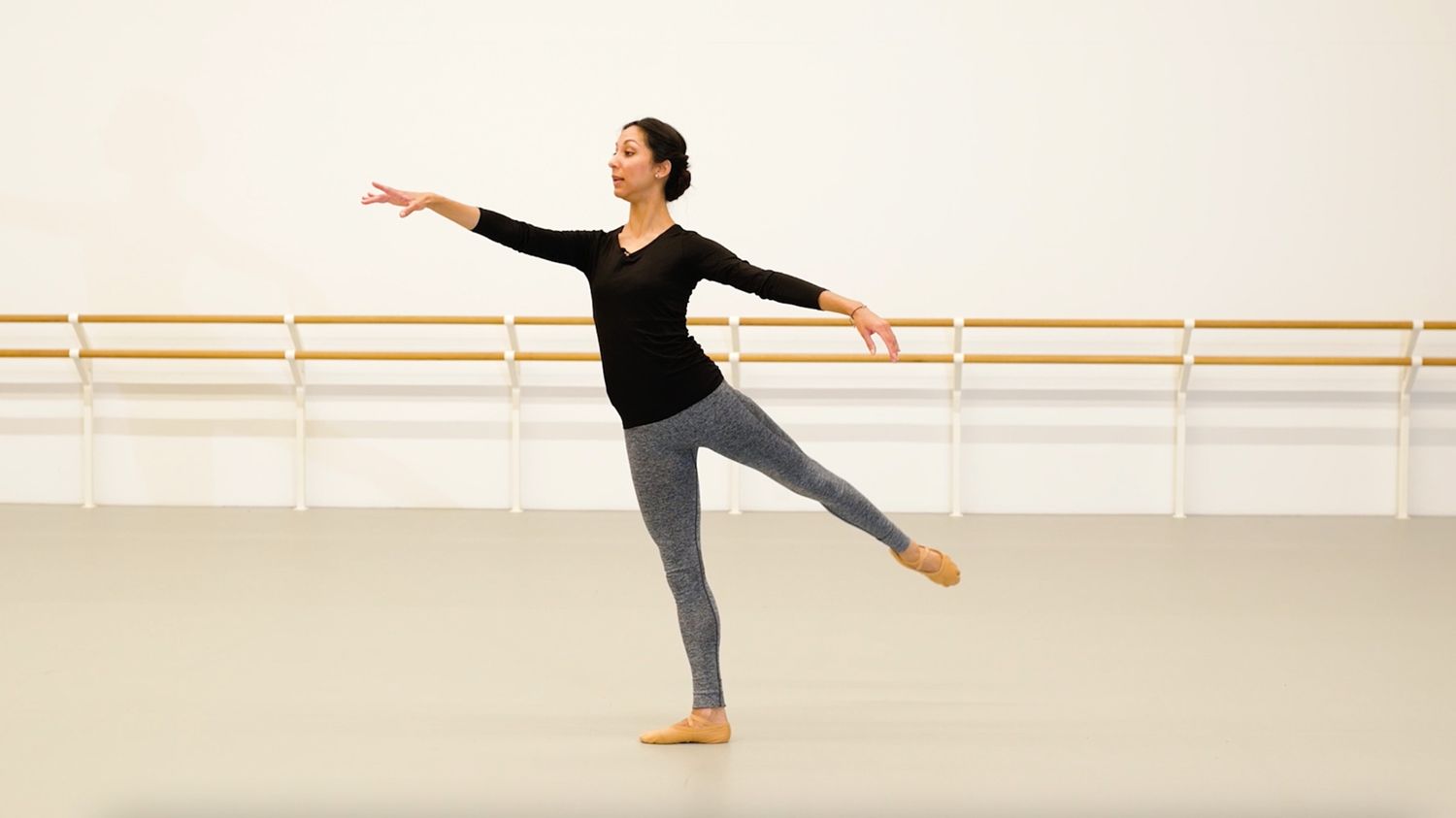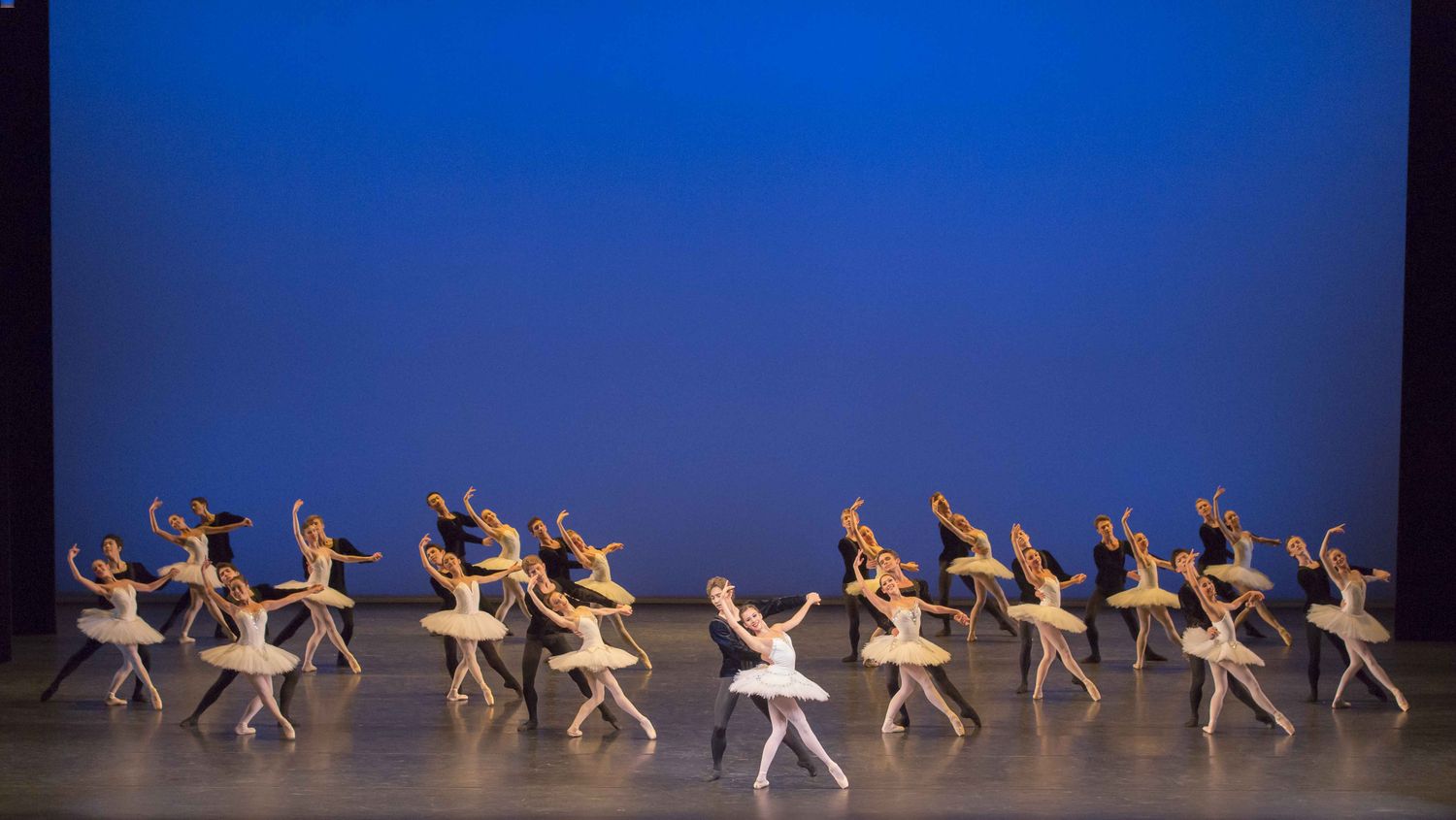Home>Events & Info>Ballet>What Is A Fouette In Ballet


Ballet
What Is A Fouette In Ballet
Modified: January 22, 2024
Discover the beautiful technique of a fouetté in ballet and its significance in the world of dance. Explore the artistry and precision of ballet movements.
(Many of the links in this article redirect to a specific reviewed product. Your purchase of these products through affiliate links helps to generate commission for AudioLover.com, at no extra cost. Learn more)
Table of Contents
Introduction
Ballet is a timeless art form that captivates audiences with its grace, precision, and awe-inspiring movements. Among the many iconic steps and techniques in ballet, the fouetté stands out as a truly remarkable feat of athleticism and artistry. With its swift and precise turns, the fouetté has become synonymous with the beauty and technical prowess of ballet dancers.
The word “fouetté” originates from the French word meaning “whipped,” which perfectly describes the quick and whipping motion of this captivating move in ballet. It is a turn executed on one foot, accompanied by a series of rapid, whipping movements of the other leg.
Throughout the years, the fouetté has evolved and gained prominence in ballet repertoire, making it a key element in both classical and contemporary ballets. Its intricate technique and mesmerizing effect have made it a favorite among audiences and a revered skill to master for ballet dancers worldwide.
In this article, we will delve into the fascinating world of fouetté in ballet. We will explore its history, the technique behind the move, its various variations, its importance in ballet repertoire, the challenges dancers face in mastering it, and some famous ballets featuring the fouetté.
Join us on this journey as we uncover the beauty and complexity of the fouetté in ballet, and gain a deeper appreciation for the skill, dedication, and artistry that ballet dancers bring to this incredible movement.
Definition of Fouetté
The fouetté is a ballet term that refers to a turn performed on one leg, usually done by female dancers. It involves a combination of rapid, whipping movements of the working leg, known as the “whip” or “whipping” action. The dancer executes a series of turns while the working leg performs a controlled and precise movement, creating a stunning visual effect.
The fouetté is characterized by the dancer’s ability to maintain balance, control, and speed throughout the turns. The supporting leg acts as a pivot point, while the working leg performs the whipping action, which is achieved by the dancer flexing and extending the knee and foot in a quick and controlled manner.
Traditionally, fouettés are performed en pointe, where the dancer is balanced on the tips of their toes, showcasing their strength and technical proficiency. However, fouettés can also be executed in demi-pointe or even flat-foot positions, depending on the requirements of the choreography.
The fouetté is often incorporated into variations, pas de deux, and grand pas in ballet performances. Its speed and precision, coupled with the graceful arm movements and expression of the dancer, make it a breathtaking and impressive element of ballet repertoire.
It is essential to distinguish between two primary types of fouettés: fouetté en dedans and fouetté en dehors. Fouetté en dedans refers to turns performed inward towards the supporting leg, while fouetté en dehors refers to turns executed outward away from the supporting leg. Both variations require coordination, balance, and impeccable technique to execute successfully.
The fouetté has become a signature move in classical ballet variations, most notably in the iconic “Black Swan” variation from Tchaikovsky’s ballet “Swan Lake.” It continues to challenge and inspire dancers, showcasing their technical prowess, artistry, and the sheer joy of ballet.
History of Fouetté in Ballet
The history of the fouetté in ballet can be traced back to the early 19th century, during the Romantic era of ballet. It was during this time that ballet technique and vocabulary underwent significant changes, as female dancers became the focus of the art form and virtuosic displays of technical skill became increasingly emphasized.
One of the earliest known uses of the fouetté can be seen in Filippo Taglioni’s ballet “La Sylphide” in 1832. Marie Taglioni, the ballerina for whom the role was created, is credited with popularizing the move. She captivated audiences with her nimble and precise fouetté turns, which showcased her exceptional skill, strength, and artistry.
Throughout the 19th century, the fouetté continued to evolve and gain prominence in ballet repertoire. It became a staple in ballet variations and pas de deux, serving as a showcase for ballerinas to exhibit their technical virtuosity and mastery of turns.
One of the most iconic uses of the fouetté is in the ballet “Swan Lake.” In the “Black Swan” variation, the character Odile performs a series of fouettés as part of her seductive and mesmerizing dance. This sequence has become synonymous with the highest level of technical skill in ballet, as dancers strive to achieve a consistent and impressive number of turns.
The fouetté also gained popularity in the realm of contemporary ballet. Choreographers such as George Balanchine and William Forsythe incorporated the move into their works, pushing the boundaries of technique and exploring new possibilities for the fouetté.
Today, the fouetté remains an integral part of ballet repertoire and continues to challenge dancers to push their limits. With its elegant and dynamic nature, it remains a beloved and iconic element of ballet performances that showcases the skill, artistry, and sheer power of ballet dancers.
Technique of Performing Fouetté
The technique of performing a fouetté in ballet requires precision, strength, and impeccable coordination. To execute this complex turn correctly, the dancer must understand and master the fundamental elements of the fouetté technique.
Here is a step-by-step breakdown of the technique involved in performing a fouetté:
- Starting Position: Begin in a strong and balanced stance, with one leg (the supporting leg) firmly planted on the floor and the other leg (the working leg) lifted in a développé position. Arms are typically held in a rounded position, either in front of the body or extended to the sides.
- Pivot: Initiate the turn by pushing off the supporting leg, generating momentum and turning the body. The working leg should remain extended and controlled as it travels around the body.
- Whip: As the turn progresses, the working leg whips around in a swift and precise motion. This whipping action is achieved by flexing the knee of the working leg and quickly extending it, creating a whipping motion. The foot should remain pointed throughout the movement.
- Spotting: Maintain focus and balance by using the technique of spotting. This involves fixing the eyes on a specific spot before initiating the turn, and quickly returning the gaze to that spot after each rotation.
- Balancing: Throughout the turn, the dancer must maintain a strong sense of balance by engaging the core muscles and staying centered over the supporting leg. The working leg should remain controlled and extended throughout the whipping motion.
- Multiple Turns: Advanced dancers can perform multiple fouettés in a row, known as fouetté en tournant. This requires a high level of control, stamina, and coordination to execute multiple whip actions while maintaining balance and speed.
It is important to note that fouettés are typically performed en pointe, with the dancer executing the turns on the tips of their toes. This adds an extra level of difficulty as the dancer must maintain their balance and control while balancing on such a small surface area.
The technique of fouetté requires years of training, practice, and refinement. Dancers must develop a strong foundation in ballet technique, particularly in areas such as turnout, core strength, and balance. Through consistent training and dedication, dancers can master the art of fouetté and incorporate it seamlessly into their performances, captivating audiences with their skill and artistry.
Variations and Different Versions of Fouetté
The fouetté, while maintaining its basic technique, has various variations and different versions that add depth and variety to its execution. These variations allow dancers to showcase their individuality, style, and technical prowess. Let’s explore some of the different versions of the fouetté:
- Fouetté en Dedans: This version of the fouetté is performed inward towards the supporting leg. The working leg whips around the body in a controlled motion, creating an elegant and spiraling effect. It requires precise coordination and balance to execute the turns while maintaining proper alignment.
- Fouetté en Dehors: In contrast to the fouetté en dedans, this version is performed outward away from the supporting leg. The working leg whips outwards, creating a dynamic and expansive movement. Fouetté en dehors is often seen in fast-paced variations, demanding quick footwork and sharp turns.
- Fouetté Rond de Jambe: This variation combines the technique of fouetté with a rond de jambe movement. Instead of the working leg whipping straight forward or to the side, it extends out in an arched circular motion. This adds an element of grace and fluidity to the fouetté, requiring precise control and an enhanced sense of balance.
- Grand Fouetté: The grand fouetté is an extended version of the fouetté, requiring the dancer to execute a greater number of turns. It is typically performed in a series of consecutive fouettés, showcasing the dancer’s stamina and ability to maintain speed and control throughout. The grand fouetté is a challenging and visually captivating display of technical skill.
- Fouetté en Tournant: This version of the fouetté involves performing multiple fouettés in a continuous turning motion. It requires exceptional technique, precision, and stamina. Dancers executing fouetté en tournant must maintain balance, coordination, and control while performing the whip motion and completing multiple revolutions.
These variations of the fouetté provide dancers with creative opportunities to display their skills and artistry. They add complexity and excitement to ballet performances, showcasing the versatility and range of the fouetté technique. Each dancer may incorporate their unique style and interpretation, making the fouetté a personalized expression of their talent.
As ballet continues to evolve, choreographers and dancers experiment with new variations and interpretations of the fouetté, pushing the boundaries of what is possible. This allows for continued growth and creativity within the art form, ensuring that the fouetté remains a captivating and dynamic element in ballet repertoire.
Importance of Fouetté in Ballet Repertoire
The fouetté holds significant importance in ballet repertoire and is regarded as one of the most iconic and challenging movements in the art form. Here are some reasons why the fouetté is considered crucial in ballet:
- Showcasing Technical Mastery: The fouetté is a testament to a dancer’s technical ability, requiring strength, balance, and precise control. Performing multiple turns with the whip action of the working leg demonstrates the dancer’s skill and mastery of ballet technique. It is often a highlight of a dancer’s solo variation, allowing them to display their technical prowess and captivate the audience.
- Visual Spectacle: The rapid rotations and whipping motion of the fouetté create a visually stunning effect on stage. The sharp and controlled movements of the working leg, combined with the elegance of the upper body and arms, captivate audiences and leave them in awe. The fouetté adds a dynamic and exciting element to ballet performances, enhancing the overall spectacle and entertainment value.
- Artistic Expression: While the fouetté is a technically demanding step, it is also an opportunity for dancers to express themselves artistically. Each dancer brings their unique style, grace, and interpretation to their execution of the fouetté, infusing it with their own artistic flair. The fluidity, musicality, and nuanced expression in the performance of the fouetté allow dancers to connect with the music and tell a story through movement.
- Ballet Tradition and Heritage: The fouetté has a rich history and has become a symbol of ballet tradition and heritage. From its origins in the 19th century to its prominent role in classical ballets like “Swan Lake,” the fouetté represents the evolution and legacy of ballet technique. It is a link to the past and a nod to the traditions that have shaped the art form over centuries.
- Elevating Ballet Technique: The fouetté challenges dancers to push beyond their limits and strive for technical excellence. It requires years of training and dedication to master the intricate movements and achieve a high level of proficiency. By incorporating the fouetté into ballet repertoire, dancers continuously elevate and refine their technique, contributing to the advancement of the art form as a whole.
Overall, the fouetté plays a vital role in ballet repertoire, representing the pinnacle of technical skill, artistic expression, and tradition. It captivates audiences with its visual impact, showcases the talent and dedication of dancers, and perpetuates the legacy of ballet as a timeless and cherished art form.
Challenges and Training for Fouetté
The fouetté is a notoriously challenging step in ballet that requires immense strength, control, and skill to execute successfully. Dancers face several challenges in mastering the fouetté technique and must undergo specific training to overcome them. Let’s explore some of the challenges and training methods involved:
- Balance and Control: Maintaining balance throughout the fouetté is essential, especially when executing multiple turns. Dancers must develop strong core muscles and a keen sense of body placement to remain centered over the supporting leg. Training exercises such as passé relevés, relevés in arabesque, and balancing drills can help improve stability and control.
- Whipping Action: The rapid whipping action of the working leg in the fouetté requires precise coordination and flexibility. Strengthening exercises for the legs, such as développés and développé devant side to side, can help improve the range of motion and control needed to execute the whip motion with speed and precision.
- Spotting and Focus: Spotting is crucial in maintaining balance and preventing dizziness during the turns. Dancers must practice their spotting technique to quickly locate a fixed point in the room and keep their gaze focused as they rotate. Exercises like chainés and piqué turns can help strengthen spotting skills and improve coordination.
- Endurance and Stamina: Performing multiple fouettés in a row requires exceptional stamina and endurance. Dancers must have a solid foundation of cardiovascular fitness and muscular endurance to sustain the energy and control needed for continuous turns. Incorporating cardio exercises, such as running or cycling, along with ballet-specific conditioning exercises, can help build endurance.
- Correct Alignment: Maintaining proper alignment throughout the fouetté is crucial for executing the turns safely and effectively. Dancers must focus on engaging their turnout muscles and aligning their hips and shoulders correctly. Strengthening exercises for the turnout muscles, like clamshells and ballet turnout exercises, can help improve alignment and prevent injury.
Training for the fouetté requires consistency, perseverance, and guidance from experienced ballet teachers. Dancers should work closely with their instructors to receive personalized feedback and correction on their technique. It is essential to break down the movements into smaller components and gradually build up to full fouetté turns, ensuring proper form and control at each stage.
Additionally, dancers should incorporate regular stretching and conditioning exercises into their training routine to enhance flexibility, strength, and overall ballet technique. Pilates, yoga, and strength training exercises can provide a well-rounded approach to developing the necessary skills for fouetté execution.
Mastering the fouetté is a journey that requires patience, perseverance, and a commitment to continual improvement. Through dedicated practice, focused training, and a deep understanding of the technique, dancers can overcome the challenges and achieve the technical proficiency and artistry needed to execute this demanding and captivating step in ballet.
Famous Ballets Featuring Fouetté
The fouetté has become an iconic and highly anticipated element in numerous ballets, captivating audiences with its technical difficulty and visual splendor. Here are some famous ballets that prominently feature the fouetté:
- Swan Lake: Tchaikovsky’s timeless ballet “Swan Lake” features one of the most famous and challenging variations of the fouetté. In the “Black Swan” variation, the character Odile performs a series of fouettés, stunning the audience with the speed and precision of her turns. This captivating sequence is a highlight of the ballet and has become a defining moment for ballerinas.
- Don Quixote: In the grand pas de deux from the ballet “Don Quixote,” the fouetté is often featured as a show-stopping moment. The female dancer performs a series of fouettés, showcasing her technical skill and agility. The fouetté section in this ballet is known for its fast tempo and multiple turns, creating an electrifying atmosphere on stage.
- Coppélia: In Act III of the ballet “Coppélia,” the character Swanilda performs a variety of technical feats, including fouettés, as she impersonates the doll Coppélia. The fouetté section in this ballet is not as lengthy as in other works but still displays the dancer’s proficiency and adds to the overall charm and excitement of the performance.
- La Bayadère: In the grand pas d’action of “La Bayadère,” the fouetté en tournant is often a highlight of the ballerina’s variation. The dancer executes a series of multiple fouettés while turning continuously, showcasing not only her technical ability but also her stamina and artistry.
- Giselle: While not as renowned for its fouetté sequences, the ballet “Giselle” incorporates fouettés in various variations and character dances. These moments serve to highlight the dancer’s technical skill and add an element of excitement and virtuosity to the performance.
These famous ballets featuring the fouetté demonstrate the technical prowess, artistry, and sheer beauty of this demanding step. Dancers who master the fouetté sequences in these ballets leave a lasting impression on audiences and become known for their skill and execution of this challenging movement.
It is important to note that while the fouetté has become synonymous with these ballets, its inclusion is not limited to these works alone. Choreographers throughout history and in contemporary ballet continue to incorporate the fouetté into their choreography, elevating its status as a signature and iconic movement in the dance world.
Conclusion
The fouetté is undeniably an essential and captivating element of ballet. Its rapid turns, graceful whip movements, and technical intricacies make it a standout feature in ballet repertoire. From its origins in the 19th century to its prominence in famous ballets, the fouetté has become synonymous with the artistry, strength, and skill of ballet dancers.
Through its history, the fouetté has evolved and pushed the boundaries of ballet technique, challenging dancers to reach new heights of excellence. It demands a combination of precise coordination, balance, control, and a strong connection to the music. The fouetté showcases the mastery of technical elements while also inviting dancers to express their individual artistry and interpretation.
Training for the fouetté requires dedication, perseverance, and guidance from experienced ballet teachers. Dancers must develop strength, flexibility, and endurance to execute this challenging movement. With the proper training and consistent practice, dancers can conquer the challenges and achieve the technical proficiency needed to perform the fouetté with grace and precision.
From the iconic “Black Swan” variation in “Swan Lake” to the electrifying moments in “Don Quixote” and other renowned ballets, the fouetté has captivated audiences with its beauty and difficulty. It has become a symbol of ballet tradition, showcasing the dedication and artistry of dancers worldwide.
The fouetté continues to inspire and challenge both dancers and choreographers to push the boundaries of what is possible in ballet. It exemplifies the perseverance, precision, and passion required to excel in this timeless art form.
As the fouetté remains a beloved and iconic element of ballet, it will continue to dazzle audiences and inspire future generations of dancers to strive for technical mastery, artistry, and the sheer joy of movement.

